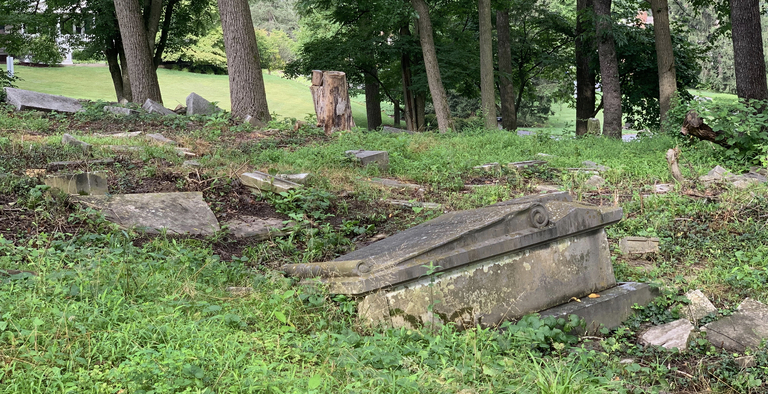[This post was originally published on Cohost.]
While out walking this morning, I decided to stop by and visit an old abandoned cemetery in the midst of my neighborhood. Like much of suburbia, the neighborhood I live in was formerly a farm, and like many farms it had a family cemetery, now gone to ruin. It was apparently vandalized sometime before or during the farm’s redevelopment in the 1950s, according to a note I found online, and I presume that all the bodies were exhumed and reinterred elsewhere. The cemetery has now been cleaned up somewhat, and boasts benches installed by local Boy Scouts.
The tomb pictured is that of Caleb T. Dorsey, one of several Calebs in the Dorsey family, once relatively prominent in the county. (Among other things, they gave their name to Dorsey’s Search Village of the Columbia new town development.) Most of the lettering on the tomb is eroded, including the dates of birth and death, but based on an online source this is probably the Caleb T. Dorsey who died in 1879 at the relatively young age of 41.
The title of this post plays off of the title of several Renaissance paintings and later works of art: Et in Arcadia Ego, or “even in Arcadia, there am I.” In other words, death and the dead can be found even in the midst of bucolic nature—or, in this case, American suburbia.
In an incredible coincidence, after deciding on the title I found out that the name of this particular farm was, in fact, “Arcadia.” Why didn’t the developer use that as the name of the newly-built neighborhood? Perhaps because, like most American suburbs, this is a place from which visible death has been banished, and a developer with a literary background did not want the combination of cemetery and name to serve as a reminder of how it could one day slip back in.
